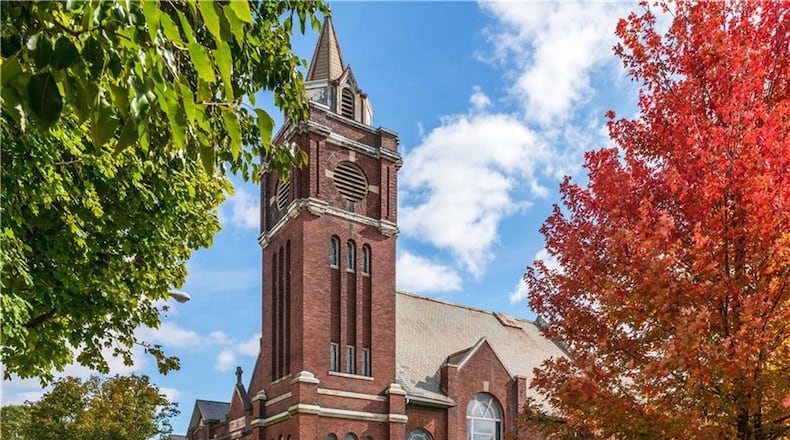Former historic church buildings are often large and aging structures with complex infrastructure. Yet the buildings are often home to spiritual meaning, distinct architecture, and historical significance.
The question of what to do with an empty older church has been raised more often as attendance and donations decline and some worshippers shift to modern church campuses.
Here are five stories from the region of what happened with different church buildings when faced with this dilemma.
Champaign County church becomes a home
Mike and Jane Major lived and raised their family in a unique home rehabbed from an abandoned 1877 Universalist Church building in Westville.
Mike said when they first bought the church in the 1970s, he thought it would take just a few weekends to get up to move it. It ended up taking closer to three years.
He said what inspired him for the project was an admiration for the open lofts he saw when living in New York City and said he liked the idea of saving something of historic value. The renovated church became the family’s home and for years was also used as an art studio for Mike’s sculpting work before he outgrew the space.
Mike said that renovating an older church takes dedication, work, and money and the buildings can present challenges to maintain, such as heating and cooling costs.
But Mike said he found it uplifting to wake up in the morning in the space, and that one of their children became an architect because of how their home introduced her to adaptive use.
“I think it’s a nurturing kind of atmosphere on a daily basis and that has continued to nurture us as a family,” he said.
Realtors plan St. Ann church reuse
A real estate brokerage intends to renovate the former St. Luke church in the St. Anne’s Hill neighborhood in Dayton.
The Romanesque Revival church at 14 Potomac St. was built in 1912. The original congregation was organized under the name German Evangelical-Lutheran Saint Lukas Congregation, according to Preservation Dayton.
Mo Zahedi, broker/owner with Glasshouse, said they are still in their due diligence phase, but the pandemic threw a wrench in things and now material costs are also inflated.
“We do not unfortunately have a timeline at this moment, but are still excited about the opportunity and have in no way abandoned the project,” Zahedi said.
Plan still unrealized for Middletown church
A Middletown church was dismantled stone by stone for a project once proposed as centerpiece for an antique shopping center in Texas.
But most of the church ended up in limbo for years held in shipping crates and pallets after the project failed to materialize.
The dismantling of the former First Baptist Church located at 119 S. Main St. started in 2013 after city officials acquired the blighted property through a tax forfeiture.
An entrepreneur from Texas had been looking for reclaimed material for his shopping center, but the project hit obstacles and never came to fruition.
Fundraising to keep Millerstown Church
In St. Paris, in Champaign County, a community coalition is trying to save a 133-year-old church.
Efforts to restore the historic Millerstown Church, built in 1888, were kicked off in December 2020 with a public event that included ringing the church bell and illuminating the windows. A nonprofit was formed for the effort and the church was rededicated at a May event. The coalition launched a Facebook page and a GoFundMe site to bring awareness and donations.
Mike Rogers, a member of the Millerstown Church Inc. board of directors, said one of the highlights of the event was Springfield pastor Marvin Wiseman who was in attendance.
“He took me aside and told me that he preached there in the ‘60s,” Rogers said.
Rogers said their first goal was to save the historic property and they’d be open to it if a new congregation would want the property. He said the church could also fill a need for event space or places to hold weddings.
Potential in the Oregon District
The developer Weyland Ventures, which is behind several Oregon District adaptive reuse projects, still owns the the St. Paul Evangelical Lutheran Church, which it bought in 2018 for $768,500.
The church at 239 Wayne Ave. closed end of 2017.
A representative with the developer said in 2018 that there were no current plans for the site but the goal was to adaptively reuse the church in a way that recognizes and preserves its heritage, but also repositions it for the future.
A message was left with Weyland to see if there are any updated plans for the site.
About the Author





